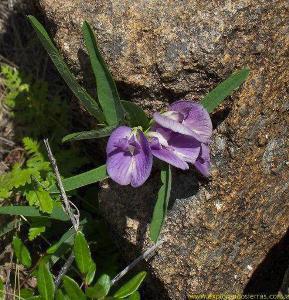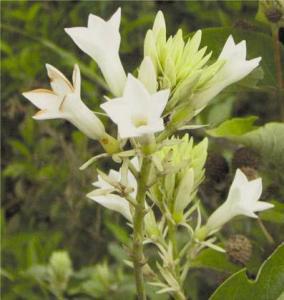Imanuel Noy-Meir
The project aims to contribute to the conservation of rare climber species by:
a) updating conservation status information;
b) collecting, conserving and propagating seeds;
c) diffusing knowledge and awareness.

Ecosystems of the Pampean Sierras in Argentina harbour a rich and biogeographically diverse flora. Climbers are an important element: 94 native species were described for the Córdoba Sierras (Volkmann 2005). Many of them have restricted, poorly documented distributions; some are rare and endemic. Habitats suitable for climbers are diminishing rapidly due to deforestation, fires, invasion by exotics and overgrazing. Some species are overexploited for traditional uses. Species with restricted distributions are at higher risk.

A prerequisite for their in situ conservation is updated information on the location of remaining populations and on their ecological tolerance and susceptibility. Another pathway for conservation of threatened species is ex situ: collection of seeds from wild populations, their conservation in germplasm banks and experimentation on feasibility and techniques of germination and cultivation. This information is essential for programs of propagation and reintroduction to nature. Last but not least, the awareness and involvement of local people can contribute greatly to the success of any conservation program.

Our team includes Imanuel Noy-Meir, plant ecologist, Mercedes Mascó, agronomist specializing in native plants, and Luis Volkmann, botanist and conservationist. We propose an integrated, three-way approach to the conservation of a target group of climber species characteristic of the Pampean Sierras of Central Argentina that are of restricted, only partially known distribution and/or at high risk due to anthropogenic pressures.
1. In situ conservation:
Targeted field trips and compilation of existing information will provide accurate, up-to-date information on the locations of the remaining populations, as well as on ecological tolerances and susceptibilities to disturbance. This will enable identification of species not currently protected in reserves, and of hotspot areas where concentrations of threatened species require protection.
2. Ex situ conservation and restoration:
Seed collection and conservation in a germplasm bank will guarantee a stock of diverse genetic material from the remaining populations of the species. Experiments to determine feasibility and adequate techniques of propagation from seed will allow this stock to be utilized for multiplication and future reintroduction into natural environments.
3. Diffusion:
Workshops at rural schools will a) provide students, teachers and parents with information on the threatened climber species and their ecological values; b) increase their awareness of the urgency of conserving the remaining populations of these species c) get them involved in conservation activities.